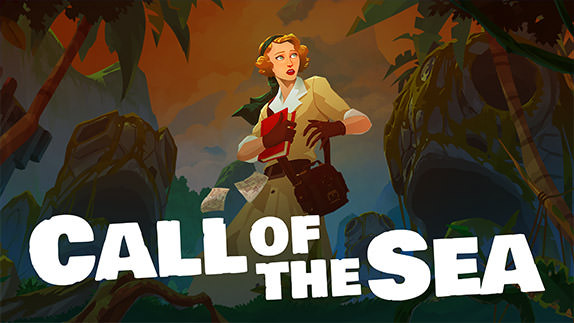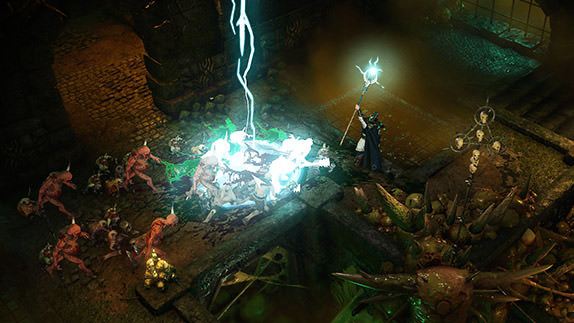Torment: Tides of Numenera Review

 By Kevin Mitchell
Posted on February 28, 2017
By Kevin Mitchell
Posted on February 28, 2017
One of the most intriguing aspects of the past few years has been the rebirth of genres that were in decline or altogether forgotten. Torment: Tides of Numenera is the latest game in the historic CRPG genre, developed by inXile Entertainment with the support of their record-breaking Kickstarter campaign. Set a billion years in the future, an individual has discovered ancient technology to allow him to cheat death, transferring his mind into a new vessel of his own design. Unbeknownst to him at first, each time he left a body, the discarded vessels gained new consciousness, living their own lives. Known as the Changing God, his blatant misuse of power has awakened an ancient horror, The Sorrow, who only exists to hunt him and all his castoffs.
Although he once loved his castoffs as a father would love his own children, his immortality corrupted him over time. He no longer cares for their fate, and only views them as tools for his own survival. You are the latest castoff, finding yourself hurtling towards the ground at incredulous speeds. Torment: Tides of Numenera is a heavily story-driven experience, designed to feel right at home with other games of the newly revitalized genre, such as Wasteland 2. The isometric view limits players from controlling the camera, a hallmark of the genre, although you can zoom in/out depending on the situation. However, across the 25-30 hours, it will take you to complete the main narrative and a majority of the side-quests, I can count the number of combat encounters on my fingers. As a spiritual successor to Planescape: Torment, Tides of Numenera gives players the necessary tools to resolve differences without the use of physical force. Every situation can be read differently. Depending on what traits you choose when creating your character, your party composition, and a bit of luck. Conversations yield multiple choices, giving you various ways to handle situations, including talking to enemies in the midst of a battle by swaying, bribing or intimidating them.
If you must fight, Torment’s combat system is completely turn-based, using characters specific stat pools to determine if using an ability is successful. The same type of mechanic is used when using your talents to persuade an individual in conversion or interacting with objects in the environment. Depending on the amount of points you have in one of the three stat pools; might, speed, intellect, and how those stats affect your character, you can use them to try and increase your chance of success. Be warned; you must use items or rest for your stats to replenish. Using all of them to achieve a 100% success rate in one situation will leave you unable to use them in the next one until replenished. Quick Fingers, for example, requires you to use your speed stat, to possible dodge a fast attack or even catch a fast-moving creature, while a heavy weapon attacks rely on your might pool. Heck, I talked my way out of the first “crisis” in the game using my character’s high intellect by lying to the leader of a group of mercenaries.
Outside of using your wits during fights, you’ll come across powerful “magical” objects called cyphers. These remnants of technology from fallen civilizations can only be used once, but they are very powerful and never miss. For example, the Unstable Detonation causes energy and physical damage to any characters within range, while the Ring of El-Aemor can cancel any negative fettle (effect) applied to a character. Funny enough, all of the objects have a very detailed story behind each one if you wish to spend additional time to read about them. As these items are quite unpredictable, holding too many can be deadly, so ensure you share them with your companions. During my playthrough, I never had much use for them as I avoided the majority of combat situations in the game.
Tides of Numenera is set within the rich world of the Numenera tabletop RPG. With that said, the game is certainly an encyclopedia regarding the sheer amount of reading you will do before you finish a single playthrough. Before my first crisis, I spent countless hours not only reading conversations between the main protagonist, the companions and the dozens of non-playable characters scattered around the first city district but reading the highly descriptive thoughts (if you choice the right trait), mood and even facial expressions of everyone you meet. On top of that, the environment is littered with interactive spots, providing elongated sequences, such as figuring out how to take a sphere out of a pyramid based on various color combinations. Some of the more important conversations are voice acted, but they are few and far between. Although the sheer amount of writing in the game is far beyond anything I’ve played, it’s the quality of the narrative that keeps things from feeling monotonous.
Everywhere you go in Torment you’ll find interesting characters, with the vast majority of them providing multiple choice dialogue options to learn more about their past, what they are doing. If they are involved in the main narrative or have their own unique side-quests, you may see up to three times more choices! The characters are some of the most interesting I've come across in a CRPG in quite some time. For example, a nano (essentially a mage or wizard) called Callistege has messed with the space-time continuum one too many times, and her shadowy appearance is actually due to her living in parallel dimensions at the same time. All of the cities guards are artificial constructs that only live for a single year, which is stolen from the town's inhabitants. You may come across, a merchant selling cyphers and other items but then you realize the merchant is also transforming into an insect due to her very own wares.
Although I found the quests and narrative in the game to be rewarding, always traveling between different destinations can be a hassle. In traditional fashion, the doesn’t use any waypoint indicators or even where characters are located on the map. I found it difficult remembering where a certain quest giver was after taking a short break from the game, largely due to the sheer amount of hand holding in today’s games.
Ultimately, all of your choices are tied to the tidal system that acts as almost like an alignment system, but more in-depth than simply good vs. evil mechanics. Tides are invisible, powerful forces. While not everyone is aware of their existence, ss you play, you'll notice changes to your tide depending on how you act, and what choices you make in the game. If your reaction to conversations is emotionally charged, you may increase your red tide, while being more empathetic can play a role in your gold tide.
It must be said that the PlayStation 4 version of the game suffers from technical issues that hamper the experience. As you will frequently travel to different locations, you’ll find out early on that the game has rather lengthy loading screens. Not only that, but I experienced frequent hitching or stuttering while running around the environment. It's quite frustrating, but hopefully, inXile can improve the performance on consoles soon after release.
Simply Put
The rich narrative and quest design in Torment: Tides of Numenera makes it a suitable spiritual successor to Planescape: Torment. Along with the tidal system, and the different conversation options, there is plenty of reasons for multiple playthroughs. You can find yourself spending countless hours reading lore and chatting with companions and random townsfolk.
Note: Torment: Tides of Numenera was reviewed on PlayStation 4. A digital copy of the game was provided by the publisher/developer.




